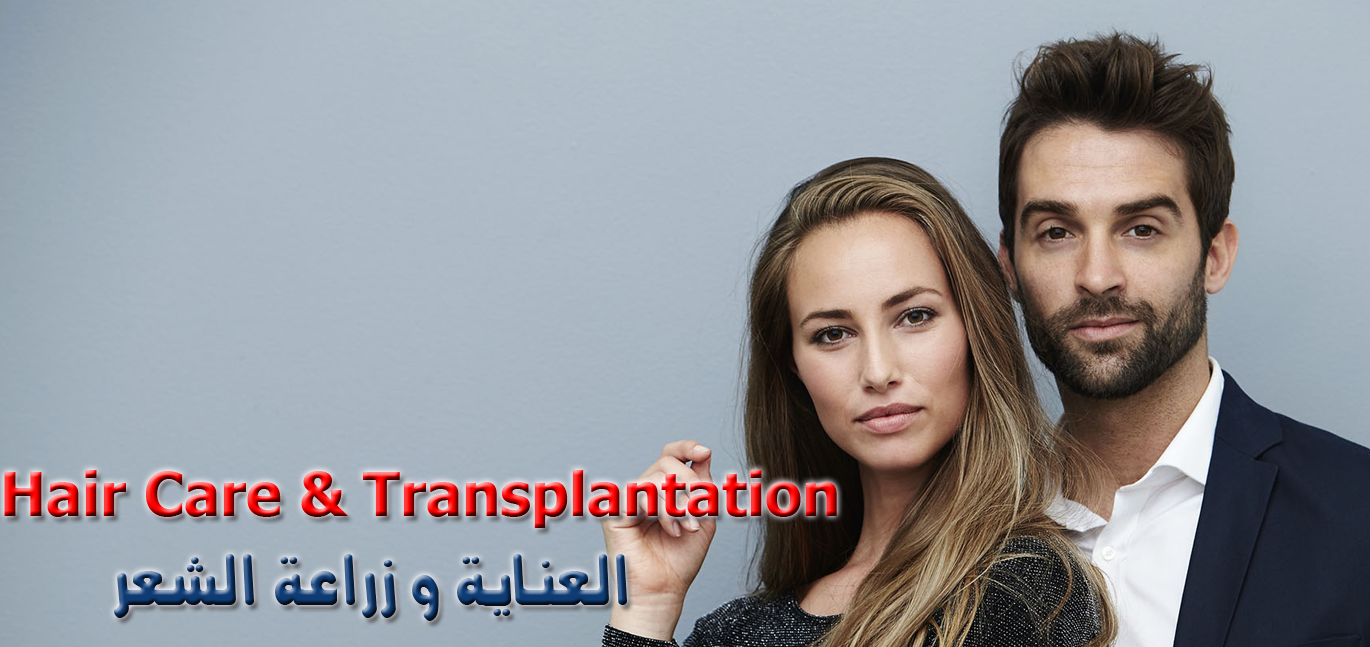Hair Transplantation
![]()

Hair transplantation
Hair is a manifestation of the beauty that God has perfected by man's creation,
and so the problem of hair loss or baldness often worries both men and women.
The problem is even worse for women, since beauty is more important to them
than men.
As for hereditary baldness, it is the mercy of God that it often affects men, and
rarely affects females, which occurs as a result of excessive sensitivity to the
hormone masculinity, and can be treated with some medical preparations such
as "Regain", but remains a temporary solution and limited results.
The incidence of non-hereditary hair has increased at the present time,
and the percentage of women has also become close to the proportion of
genetic baldness in men, due to the causes of mental stress, or lack of
nutrients, or chronic physical diseases, as happens in cases of patients
with thyroid, as well as in patients treated with chemical preparations,
and can also occur after burns and wounds.
How does hair transplantation take place?
Anesthesia
A local anesthetic is used for hair transplantation, and a high-frequency
vibrating device is applied to the skin to reduce the sensation of injection.
This is known as medically with vibration anesthesia, which is enough to
make the patient feel no pain during the hair transplant.
Extracting and separating the follicles
Natural hair follicles are extracted in two ways:
Method 1: Medically called the "Follicular Unit Transplantation Method"
A small strip of the back of the head is taken. The donor area is then
divided into very small pieces. Each Slice contains only one hair or two
hairs. This is done under a special microscope, and the wound is completely
closed.
This method is somewhat painful after the operation, leaving a simple scar
on the back, depending on the elasticity of the scalp, but without any swelling
in the area.
Method 2: is the newest and easiest and is currently called the method of
non-surgical "Follicular Unit Extraction" or micro grafts.
The grafts are harvested one by one using modern 1 mm devices from the
donated area.
The grafts are then separated,cleaned and placed in saline to maintain them
until they are implanted.
The operation is usually done in one session, during which a number of follicles
are planted, ranging from two thousand to seven thousand hair, which is usually
enough for a person only if the head completely free of hair.
Results of hair transplantation
After the operation, you may be surprised by hair loss in the first stage before
the hair follicles are-grown again and the hair begins to appear, so the hair
covers the place that was re-planted within a month or two, and within six months
the hair grows completely back to its normal length.
Transplanted hair appears to be normal, especially if a person follows a healthy diet
and takes care of it by putting and using the necessary medicines and creams.
Hair can be shaved and styled after six months of operation just as it is normal.
Complications of hair transplantation
Hair transplantation is usually done by local anesthesia, so complications are not
followed. Contagion Complications are often avoided by taking antibiotics, as well
as some bruising that gradually disappears. Bleeding can occur under the scalp
and can be quickly overcome with anti-hemorrhagic drugs.
Age appropriate for hair transplantation
The patient must wait until the age of 20 to complete physical construction.
The hair density in the donor area will be completed. The process will be
facilitated by results of greater success and the prevention of complications.
Before that age, medical treatment is better than agriculture.